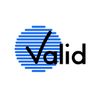Web 3.0 represents the next iteration or phase of the evolution of the web/internet and potentially could be as disruptive and represent as big a paradigm shift as Web 2.0 did. Web 3.0 is built upon the core concepts of decentralization, openness, and greater user utility.
Berners-Lee had expounded upon some of these key concepts back in the 1990s, as outlined below:
Decentralization: “No permission is needed from a central authority to post anything on the web, there is no central controlling node, and so no single point of failure...and no ‘kill switch’! This also implies freedom from indiscriminate censorship and surveillance.”
Bottom-up design: “Instead of code being written and controlled by a small group of experts, it was developed in full view of everyone, encouraging maximum participation and experimentation.”
Web 3.0 has moved well beyond the original concept of the Semantic Web as conceptualized by Berners-Lee in 2001. This is partly because it is very expensive and monumentally difficult to convert human language—with all its subtle nuances and variations—into a format that can be readily understood by computers, and because Web 2.0 has already evolved substantially over the past two decades.
Defining Features of Web 3.0
Though there is as yet no standardized definition of Web 3.0, it does have a few defining features:
Decentralization: This is a core tenet of Web 3.0. In Web 2.0, computers use HTTP in the form of unique web addresses to find information, which is stored at a fixed location, generally on a single server. With Web 3.0, because information would be found based on its content, it could be stored in multiple locations simultaneously and hence be decentralized. This would break down the massive databases currently held by internet giants like Meta and Google and would hand greater control to users.
With Web 3.0, the data generated by disparate and increasingly powerful computing resources, including mobile phones, desktops, appliances, vehicles, and sensors, will be sold by users through decentralized data networks, ensuring that users retain ownership control.
Trustless and permissionless: In addition to decentralization and being based upon open source software, Web 3.0 will also be trustless (i.e., the network will allow participants to interact directly without going through a trusted intermediary) and permissionless (meaning that anyone can participate without authorization from a governing body). As a result, Web 3.0 applications will run on blockchains or decentralized peer-to-peer networks, or a combination thereof—such decentralized apps are referred to as dApps.
Artificial intelligence (AI) and machine learning: In Web 3.0, computers will be able to understand information similarly to humans, through technologies based upon Semantic Web concepts and natural language processing. Web 3.0 will also use machine learning, which is a branch of artificial intelligence (AI) that uses data and algorithms to imitate how humans learn, gradually improving its accuracy. These capabilities will enable computers to produce faster and more relevant results in a host of areas like drug development and new materials, as opposed to merely targeted advertising that forms the bulk of current efforts.
Connectivity and ubiquity: With Web 3.0, information and content are more connected and ubiquitous, accessed by multiple applications and with an increasing number of everyday devices connected to the web—one example of which is the Internet of Things.
Potential and Pitfalls of Web 3.0
Web 3.0 has the potential to provide users with far greater utility, going well beyond the social media, streaming, and online shopping that comprise the majority of Web 2.0 applications consumers use. Capabilities like Semantic Web, AI, and machine learning, which are at the core of Web 3.0, have the potential to greatly increase application in new areas and vastly improve user interaction.
Core features of Web 3.0, such as decentralization and permissionless systems, will also give users much greater control over their personal data. This may help limit the practice of data extraction—which refers to information collected from web users without their consent or compensation—and curb the network effects that have enabled the technology giants to become near-monopolies through exploitative advertising and marketing practices.
However, decentralization also brings with it significant legal and regulatory risks. Cybercrime, hate speech, and misinformation are already difficult to police and will become even more so in a decentralized structure because of the lack of central control. A decentralized web would also make regulation and enforcement very difficult; for example, which country’s laws would apply to a specific website whose content is hosted in numerous nations globally?
What’s a Real-World Example of How Web 3.0 Will Be Able to Provide Greater User Utility?
For example, if you are making plans for a vacation and are on a budget, you currently would have to spend hours looking for flights, accommodation, and car rentals, trawling through numerous websites and comparing prices. With Web 3.0, intelligent search engines or bots will be able to collate all this information and generate tailored recommendations based on your profile and preferences, saving you hours of work.
Is Web 3.0 the Same as the Semantic Web?
Web 3.0 goes well beyond the Semantic Web envisioned by web pioneer Tim Berners-Lee in 2001. Though Web 3.0 uses technologies based on Semantic Web concepts and natural language processing to make user interaction more intuitive, it also has other features, such as widespread use of artificial intelligence (AI) and machine learning, and trustless/permissionless systems, such as blockchain and peer-to-peer networks.
Which Newer Technologies in Finance Will Be Facilitated by Web 3.0?
Because of its key decentralization feature, Web 3.0 lends itself to technologies such as blockchain, distributed ledger, and decentralized finance (DeFi).







Discussion (0)